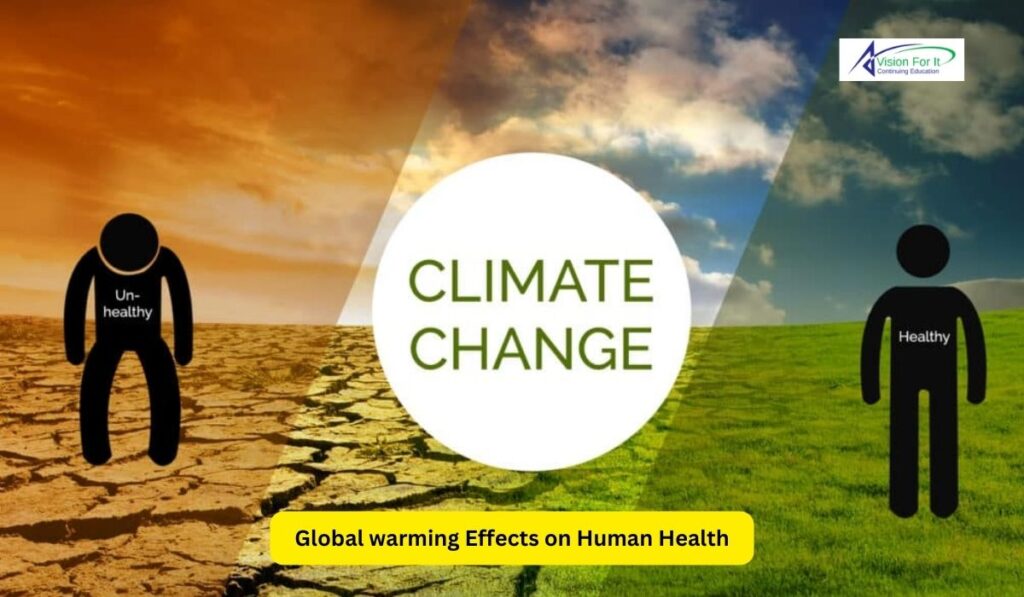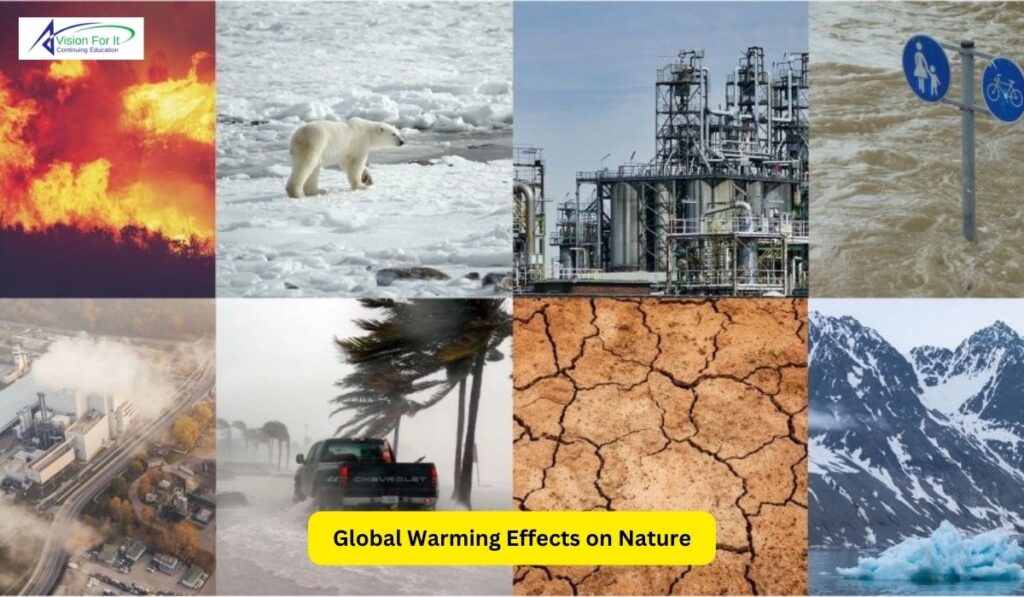What is Global Warming? | Its Effects And Solution
Global warming is the rapid increase in Earth’s average surface temperature over the past years. This phenomenon is primarily caused by the release of greenhouse gases into the atmosphere.
- Global warming is primarily caused by human activities such as burning fossil fuels and deforestation.
- These activities release greenhouse gases into the atmosphere.
- Greenhouse gases trap heat and contribute to the warming of the Earth’s surface.
- As a result, there has been a noticeable increase in Earth’s average surface temperature.
- The release of greenhouse gases is the main factor behind this temperature rise.
Global Warming Effects on Human Health

- Extreme Heat and Air Quality: Pre-term birth in rural areas is exacerbated by rising temperatures, leading to increased heat-related illnesses and deaths in both urban and rural areas.
- Extreme Weather Events: Rising temperatures are threatening health and social services for people, causing frequent extreme weather events that disrupt their daily lives.
- Wildfires and Air Pollution: Wildfires pose a direct threat to human life, releasing smoke and causing severe pollution, posing a significant risk to respiratory health.
- Food Safety and Nutrition: Climate change impacts food safety by lowering the nutritional quality of staples like rice and wheat, increasing toxins accumulation in seafood, and increasing food-borne pathogens.
- Mental Health and Displacement: The impacts of climate change on mental health, particularly about fresh water, have significant health implications.
Global Warming Effects on Nature

The effects of global warming include climate change, extreme weather events, melting glaciers, ocean acidification, and shifts in ecosystems.
The effects on nature of Global Warming.
- Melting Glaciers and Ice Sheets
- Ocean Acidification
- Extreme Weather Events
- Water Resources and Agriculture
- Threats to Forests
- Loss of Permafrost:
What are the 5 causes of climate change?
Climate change, including burning fossil fuels and deforestation, contributes to the increase in global temperatures by trapping heat and releasing greenhouse gases.
- Greenhouse Gases: Human activities such as burning fossil fuels and agricultural practices primarily cause the release of greenhouse gases, including carbon dioxide, which leads to global warming.
- Variations in the Sun’s Intensity: Earth’s energy is primarily provided by the sun, but variations in solar energy output have not been a significant cause of current warming trends.
- Industrial Activity: The Industrial Revolution significantly impacted energy production and transportation, leading to the release of greenhouse gases and the production of various industrial processes.
- Agricultural Activity: Agricultural practices, including the use of commercial and organic fertilizers, release nitrous oxide, a potent greenhouse gas, significantly contributing to climate change.
- Deforestation and Land Use Changes: Urbanization reduces the capacity of ecosystems to absorb carbon dioxide, a greenhouse gas, and significantly impacts the global climate.
How can Global Warming be Reduced?
The Paris Agreement promotes the use of trees as energy sources, promoting sustainable practices and reducing emissions through reforestation.
Solutions include reducing emissions, promoting energy efficiency, and promoting sustainable practices.
Here are some practical steps you can consider to reduce global warming
- Drive Less: Mass transit and walking are effective ways to save on transportation, as they reduce carbon dioxide emissions per mile traveled.
- Check Your Tires: Properly inflated tires can significantly improve gas mileage by over 3 percent, thereby reducing the release of 20 pounds of carbon dioxide into the atmosphere.
- Recycle More: By recycling half of your household waste, you can save 2,400 pounds of carbon dioxide per year.
- Use Less Hot Water: Wash clothes in cold or warm water instead of hot water to save over 500 pounds of carbon dioxide annually.
- Plant a Tree: Tree-planting initiatives help reduce carbon dioxide emissions by absorbing one ton of carbon dioxide from a single tree over its lifetime.
- Turn Off Electronic Devices: Switch off your television, DVD player, stereo, and computer when not in use to save thousands of pounds of carbon dioxide annually.
- Spread Awareness: Challenge leaders to reduce their carbon footprint through global movements, encouraging others to join in and take action to combat climate change.

